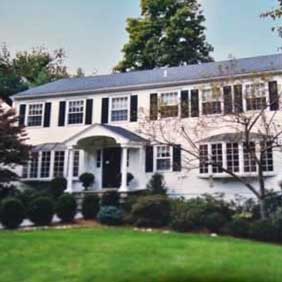 The lure of re-locating after retirement is not as strong as it used to be. More and more older adults are choosing to remain in their own homes. According to the U.S. Census Bureau, over 75 percent of the 55-plus crowd own their own homes. They are choosing to “age in place.”
The lure of re-locating after retirement is not as strong as it used to be. More and more older adults are choosing to remain in their own homes. According to the U.S. Census Bureau, over 75 percent of the 55-plus crowd own their own homes. They are choosing to “age in place.”
The Centers for Disease Control and Prevention define “aging in place” as being able to live in one’s home and community safely, independently, and comfortably, regardless of age, income, or ability level.
If you or a loved one currently are in retirement or planning for the future, the Pennsylvania Institute of Certified Public Accountants recommends addressing emotional needs and financial considerations to make independent living a more workable reality.
What Really Matters to You?
Don’t get hung up on the term “aging in place.” If you want to continue enjoying the people and activities you love, it may not be necessary to remain in the same residence. As a first step in your planning, list what’s important to you in your current lifestyle and the things you wouldn’t mind changing. Selling the family home can be an emotional decision, but it may be the best choice if a smaller place will be easier to maintain, closer to family, and a money saver that could allow you to travel the world like you’ve always wanted.
Will Your Current Home Accommodate Your Needs?
It’s important to determine whether your current home will still be a good fit if you have problems with mobility or other health concerns as you get older. Features that make homes more comfortable for older people include:
• bedrooms and bathrooms that are located on the entry level
• few – if any – steps in the doorways or throughout the home
• entryways that are wide enough to accommodate wheelchairs
Conduct an informal assessment of your home to decide if it’s accessible now or if remodeling projects could be in order.
What Would Renovation Cost?
If you don’t think your home will remain easily navigable as you age, consider the potential expense of a renovation.
A MetLife study cited renovation costs at $800 to $1,200 for widening a doorway; roughly $500 for the installation of two bathroom grab bars; and $3,500 to $35,000 for a variety of bathroom improvements, including better lighting, curbless showers or tub seats and lifts, and installation of sinks that a wheelchair can roll under.
If remodeling seems too costly or complicated, remember that you can downsize or change to a location that’s easier to navigate and still remain independent. There may even be other benefits to moving into a different home or neighborhood. For example, a new place in a more populous area may give you easier access to activities and social life.
Do You Have a Good Support System?
You may eventually need to rely on others to care for you or help with some of the tasks of everyday life. It will be easier to be relatively independent if you live near family or friends you can count on, or close to home health care providers, doctors, and medical facilities.
Your planning should include identifying a local support system and determining whether it will meet your changing needs. As part of this effort, investigate local community and government resources, in addition to geriatric care managers.
The “Your 1st Step to Finding Resources for Older Adults” pamphlet, available at www.eldercare.gov, offers tips and contact information.
Turn to Your Local CPA
Deciding on the best living arrangement should be a collaborative effort that involves family and any existing caregivers. Remember that your local CPA can also offer valuable insights on finance-related concerns. Contact him or her with all your questions about any financial planning questions you might have. To find a CPA by location or area of expertise, as well as other resources, visit www.picpa.org/moneyandlife.













